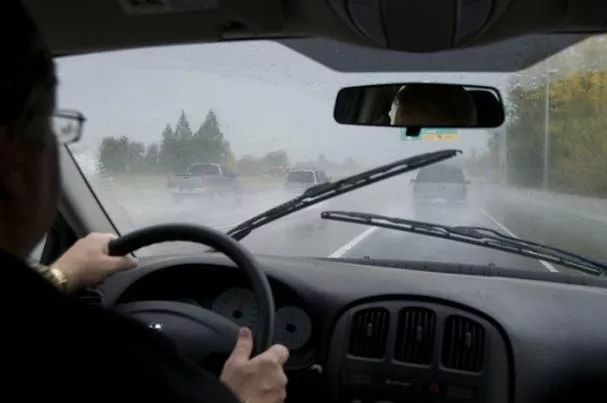Philkotse.com suggests a few tips from experienced automobile professionals for traveling safely in heavy rain.
1. Before you start driving
First to ensure that the car can travel safely in the rain, the driver needs to check important parts such as brakes, tires, and wipers.
How to Drive in a Lightning Storm | Extreme Weather Driving Tips | Ford
For braking system
Moving in acidic rain water makes it very easy for braking malfunctions such as uneven releases or shocks, which can possibly cause serious accidents. Therefore, if you are frequently driving under heavy rain, it is necessary to have the brakes checked by car care services whenever there are signs of brake problems and replace the brake fluid more regularly to avoid malfunctions. Click here to know 4 tips to check whether your brakes are still good or not.
For tires
The driver should pay attention to the tread depth of the tires after about 40-50 thousand km of usage. If the treads are worn out and their depth is too shallow, they cannot remove water from under the tires effectively, thus cannot maintain good road grip. This increases the likelihood of Hydroplaning (tires being lift off the road because of the water), which leads to loss of control and possibly serious accidents. Here is a clever trick using a P1 coin to check your car’s tread depth.
Windshield wipers
As recommended by experienced car care and maintenance specialists, drivers should replace the wipers at least once a year to ensure normal function. Philkotse.com also suggests 3 useful tips to keep your windshield in its top shape.
2. While you drive
- First of all, stay focused and pay much attention to the road, because your vision is limited. You should drive slower so you can handle unexpected situations on the road. In addition, you need to turn on the headlights (even if it is daytime) to make it easier for other vehicles to notice your car, avoiding unwanted collisions when vision is restricted.

Stay focused and drive calmly
- Try to move away from big trucks or buses because these vehicles can splash water into your car’s windshield, blurring your vision. Drive in the middle of the lane to have more space to react with unexpected situations, which happen a lot more in heavy rain. This also helps when driving on flooded roads because the road surface is normally designed higher in the middle and lower in two sides.
- In addition, the driver should always brake earlier and with more gentle force than normal because the sensitivity of the brakes on wet roads will be two to three times worse than on dry roads. At the same time, the driver should hold on tightly to the steering wheel tightly to avoid losing control in common situations such as brake shocks or hydroplaning.
3. If something bad happens
If the car is slipping, you need to slow down by releasing the accelerator pedal and not by using brakes. At the same time, slowly and firmly moving the steering wheel to regain control of the car. Absolutely not use sharp brakes because you can lose control completely doing so.
How to Drive in Heavy Rain | Extreme Weather Driving Tips | Ford
Besides the above-mentioned things to keep in mind, there are still several helpful tips for driving in heavy rain such as must-have apps for Filipino drivers in cases of emergency and how to properly response to s skid. Click here to find our more.
>>> Click to find our series of useful tips to survive driving in the Philippines











